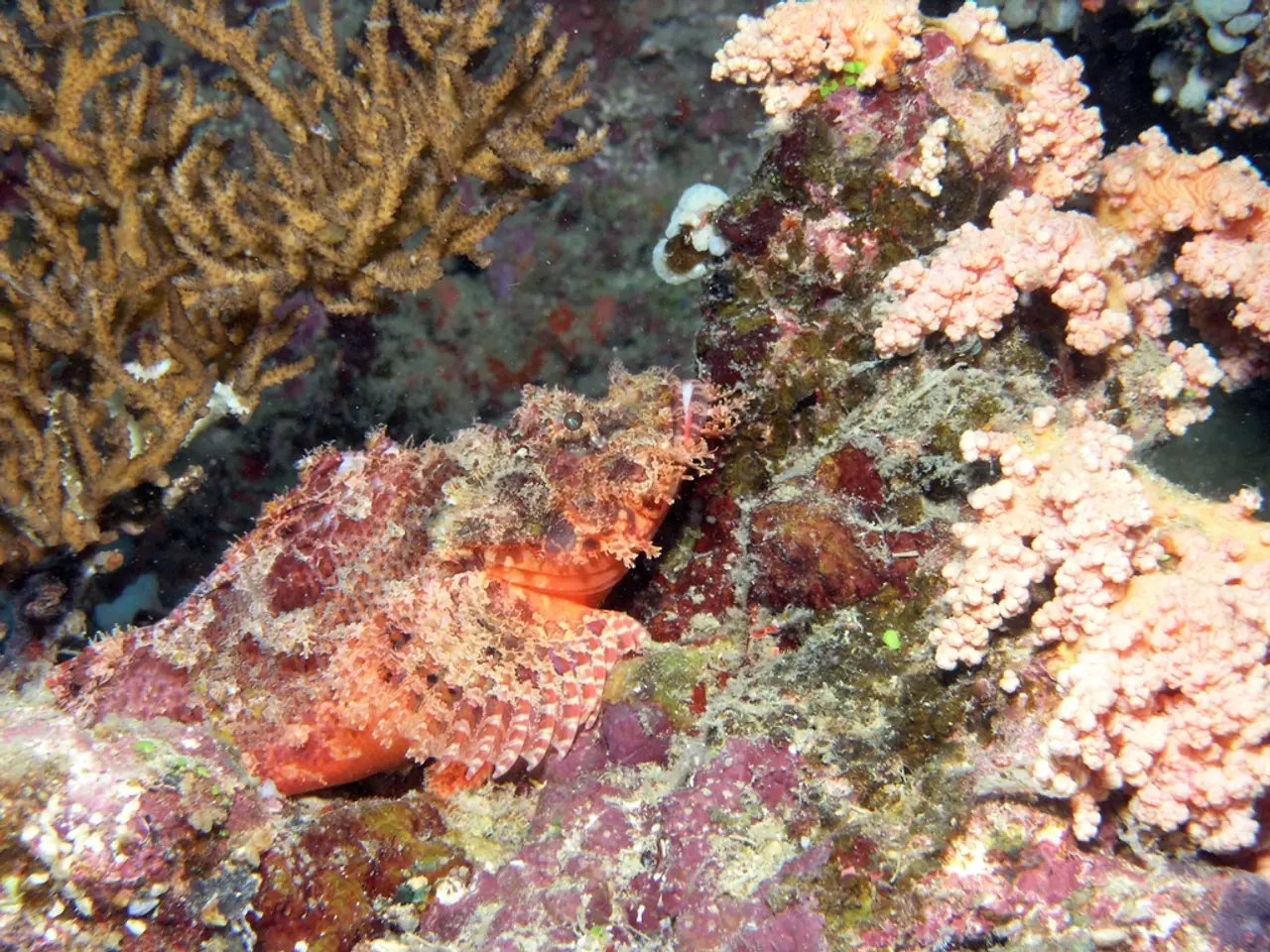Swimmers alerted amid escalating risks in the Baltic Sea - authorities issue cautionary advisories
The Baltic Sea, a popular travel destination, may pose a hidden danger to bathers due to the growing presence of vibrio bacteria. Despite the risks, many continue to flock to its shores, unaware of the potential consequences.
Authorities predict that the risk of vibrio bacteria will persist until the end of the bathing season. Those who belong to the at-risk group, such as individuals with weakened immune systems or chronic liver diseases, should carefully weigh the pleasure of bathing against the potential risks.
Climate change is contributing to the warming of the Baltic Sea, creating ideal conditions for these dangerous germs to spread. As a result, the risk of bacteria-related danger to bathers is growing steadily.
The State Office has detected vibrios in water samples from Boltenhagen to Usedom, and along the Schleswig-Holstein and Polish Baltic Sea coasts. These bacteria prefer shallow, warm coastal areas, making them a potential danger zone for bathers.
Vibrio bacteria can enter the body through cuts or wounds exposed to seawater, or by consuming contaminated seafood such as oysters. Infections can range from mild ear or stomach illness to severe bloodstream infections, sepsis, and even limb amputation. To reduce the risk, bathers should avoid swimming with open wounds or recent piercings and avoid eating raw or undercooked shellfish.
Symptoms of Vibrio infections vary but can include skin and soft tissue infections at wound sites, ear infections, gastrointestinal symptoms, and severe systemic illness such as sepsis in vulnerable people. If symptoms such as severe skin infection or fever develop after swimming, prompt medical care is advised.
Precautions for bathers recommended by health authorities include avoiding swimming in brackish or saltwater with open cuts, wounds, or recent piercings, avoiding eating raw or undercooked shellfish, especially oysters, and those with weakened immune systems or chronic liver conditions should be extra cautious or avoid exposure to at-risk waters.
The increasing occurrence of Vibrio infections is linked to climate-driven warming and lower salinity of coastal waters, which support bacterial proliferation and spreading beyond traditional areas, now reaching the North Sea and southern coasts like Türkiye.
Parents are urged to keep a close eye on their children in the water, as small skin injuries can occur during play. If symptoms such as skin redness, swelling, or fever occur after bathing, immediate medical attention is advised.
In summary, Vibrio bacteria in the Baltic Sea present a seasonal health hazard for swimmers, especially those with skin breaks or compromised health, and careful hygiene and food safety practices are key to prevention.
- The science of environmental-science reveals that climate-change is causing the Baltic Sea to warm, fostering the growth of vibrio bacteria, a hidden danger to bathers.
- Workplace-wellness and health-and-wellness initiatives should educate people about the potential risks associated with the Baltic Sea, emphasizing the importance of fitness-and-exercise, skin-care, and nutrition in maintaining overall health.
- Sports enthusiasts planning travel to the Baltic Sea should be mindful of the weather conditions and the associated risks posed by vibrio bacteria, particularly during periods of warmer weather.
- Authorities suggest that though the climate-change induced risks persist, individuals can protect themselves by avoiding swimming in shallow, warm coastal areas and by properly cooking seafood to reduce the risk of vibrio infections.
- The State Office advises that vibrio bacteria can manifest through skin and soft tissue infections, ear infections, gastrointestinal symptoms, and even sepsis, making it crucial for parents to keep a watchful eye on their children while they're in the water.
- In light of the increasing occurrence of vibrio infections, environmental-science experts highlight the need for continued research and monitoring of the bacterial proliferation, emphasizing its potential reach into new areas such as the North Sea and southern coasts like Türkiye.




